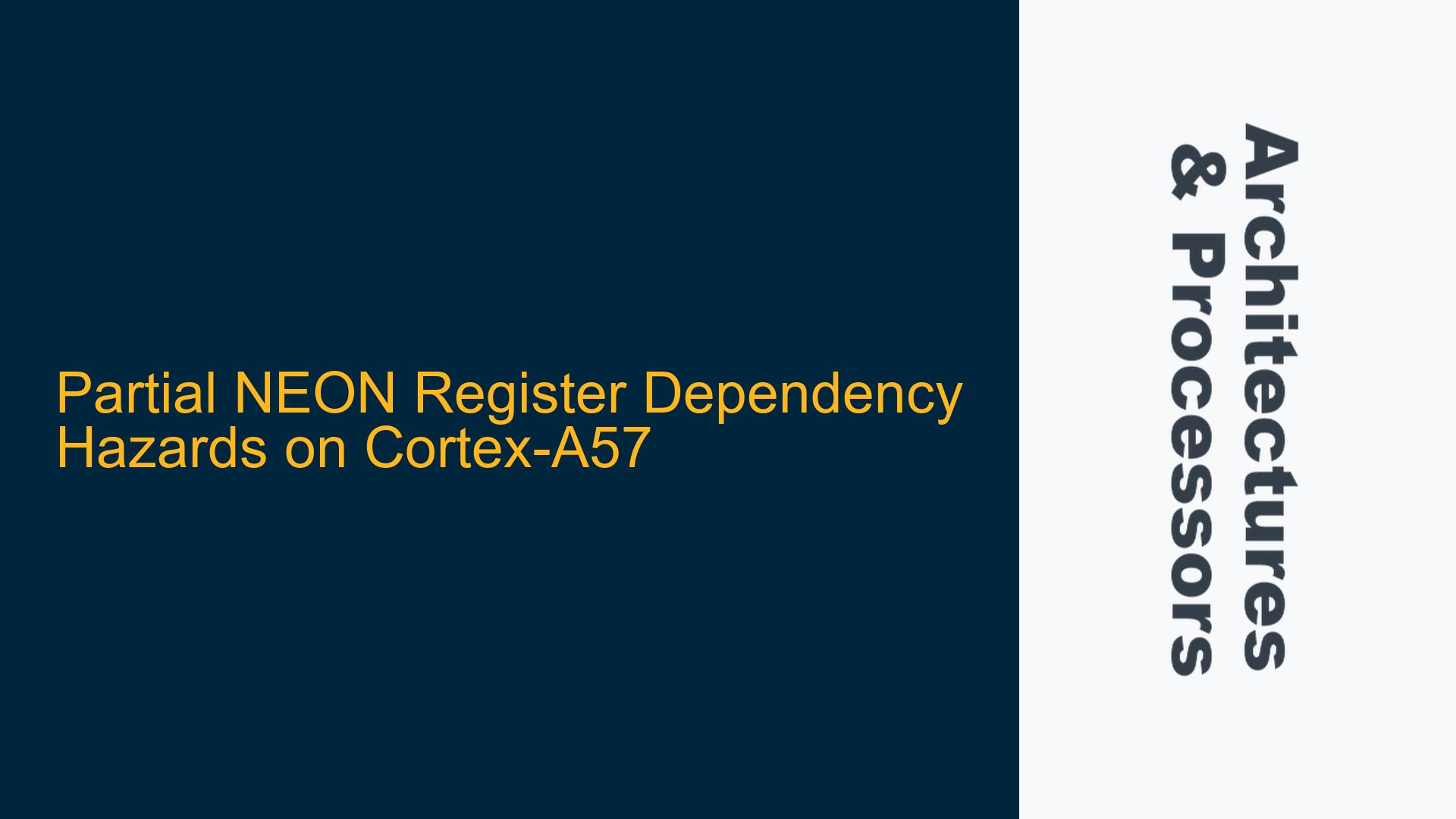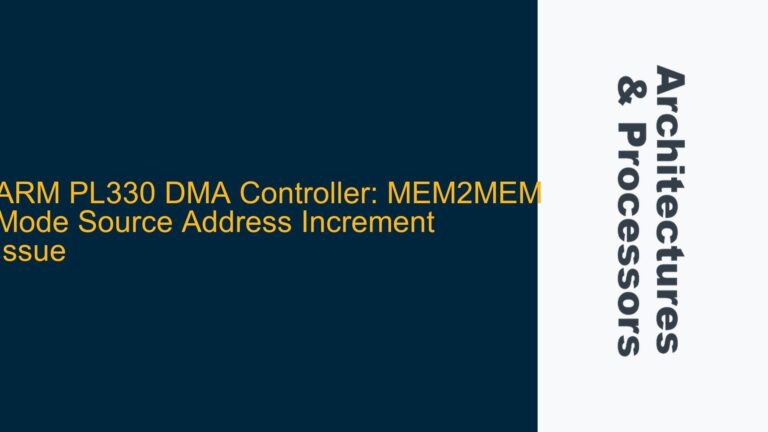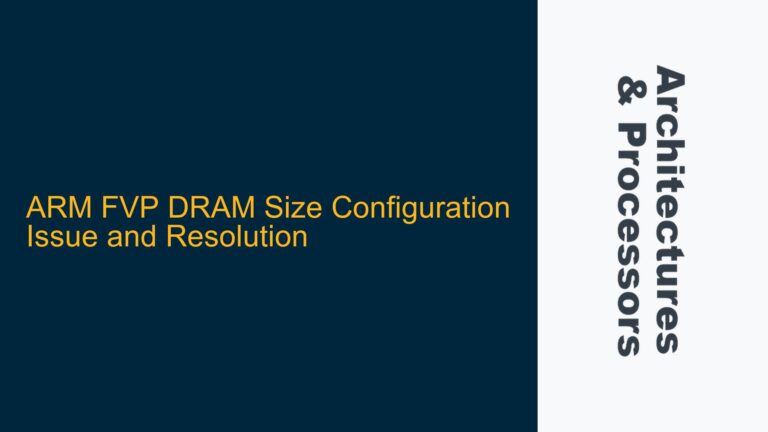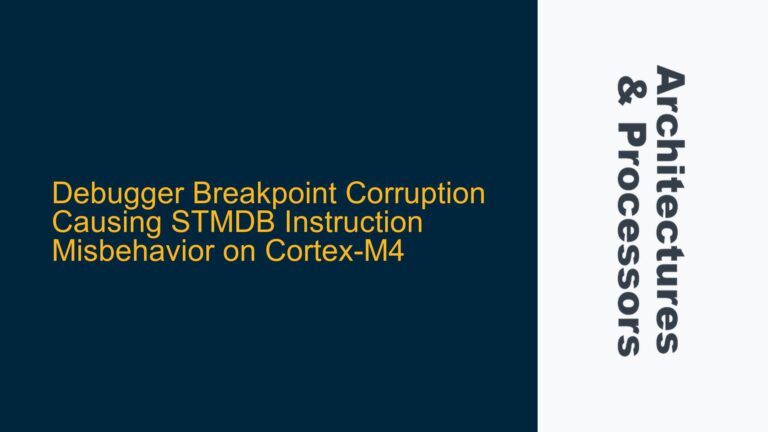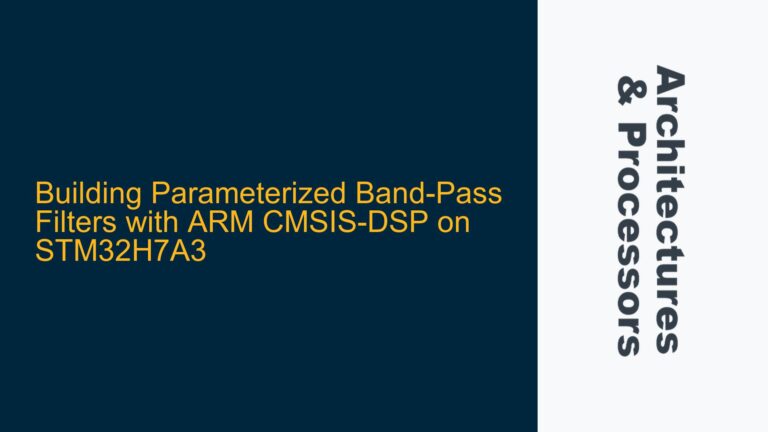NEON Partial Register Dependency Hazards During Element-Wise Load Operations
The Cortex-A57 processor, like many modern ARM cores, employs advanced techniques to optimize instruction execution, including out-of-order execution, register forwarding, and dependency tracking. However, when working with NEON vector registers, particularly during element-wise load operations, subtle hazards can arise due to partial register dependencies. These hazards occur when subsequent instructions depend on specific elements of a NEON register that are still being written by earlier instructions. This scenario is particularly relevant in code that performs sequential loads into different elements of the same NEON register, as seen in the following example:
ld1 {v0.s}[0], [x0] // Load element 0 of v0
ld1 {v0.s}[1], [x1] // Load element 1 of v0
ld1 {v0.s}[2], [x2] // Load element 2 of v0
ld1 {v0.s}[3], [x3] // Load element 3 of v0
In this case, the processor must ensure that each load operation completes before the next one begins, as they all target the same NEON register (v0). The Cortex-A57 tracks dependencies at the element level rather than the register level, meaning that it can detect when a subsequent load operation targets a different element of the same register. However, this tracking mechanism can still introduce stalls if the pipeline is not fully utilized or if the memory subsystem cannot keep up with the load requests.
The primary concern here is whether the second load operation (ld1 {v0.s}[1], [x1]) must wait for the first load operation (ld1 {v0.s}[0], [x0]) to complete before it can proceed. While the Cortex-A57’s dependency tracking allows for some overlap in execution, the memory subsystem’s latency and bandwidth constraints can still cause stalls. These stalls are particularly problematic in performance-critical code, such as image processing pipelines, where large amounts of data must be loaded and processed efficiently.
Memory Subsystem Latency and Register Forwarding Hazards
The Cortex-A57’s memory subsystem plays a critical role in determining the performance of NEON load operations. When multiple load instructions target different elements of the same NEON register, the memory subsystem must handle each load request sequentially, even if the processor’s dependency tracking allows for some overlap. This sequential handling can lead to stalls, as the memory subsystem may not be able to service all load requests simultaneously.
Register forwarding hazards further complicate this scenario. The Cortex-A57 uses register forwarding to minimize stalls by allowing dependent instructions to access the results of previous instructions as soon as they are available. However, in the case of partial NEON register dependencies, the processor must wait for the specific element being loaded to become available before it can forward the result to the next instruction. This waiting period can introduce additional stalls, particularly if the memory subsystem is already under heavy load.
The Cortex-A57’s Performance Monitor Unit (PMU) provides a way to measure these stalls. The PMU event DISP_SWDW_STALL (event number 0x12C) counts the number of cycles spent stalling due to register forwarding hazards. By profiling code using this event, developers can identify whether partial NEON register dependencies are causing significant performance bottlenecks.
In addition to memory subsystem latency and register forwarding hazards, the Cortex-A57’s out-of-order execution engine can also impact performance. While out-of-order execution allows the processor to execute independent instructions in parallel, it can struggle to find sufficient independent instructions in code that performs sequential loads into the same NEON register. This limitation can reduce the processor’s ability to hide memory latency, leading to further stalls.
Optimizing NEON Load Operations for Cortex-A57
To mitigate the performance impact of partial NEON register dependencies, developers can employ several optimization techniques. One approach is to load data into ARM general-purpose registers first and then transfer the results into NEON registers. This method can reduce the number of NEON load operations and minimize the impact of partial register dependencies. For example:
ldr w0, [x1] // Load data into ARM register w0
ldr w1, [x2] // Load data into ARM register w1
ins v0.s[0], w0 // Insert w0 into element 0 of v0
ins v0.s[1], w1 // Insert w1 into element 1 of v0
This approach reduces the number of NEON load operations and allows the processor to execute more instructions in parallel. However, it also introduces additional instructions for transferring data between ARM and NEON registers, which can offset some of the performance gains.
Another optimization technique is to unroll loops and interleave load operations to maximize parallelism. For example:
ld1 {v0.s}[0], [x0] // Load element 0 of v0
ld1 {v1.s}[0], [x1] // Load element 0 of v1
ld1 {v0.s}[1], [x2] // Load element 1 of v0
ld1 {v1.s}[1], [x3] // Load element 1 of v1
By interleaving load operations for different NEON registers, the processor can execute more instructions in parallel and reduce the impact of partial register dependencies. However, this technique requires careful tuning to ensure that the memory subsystem can handle the increased load requests without causing stalls.
Finally, developers can use the Cortex-A57’s PMU to profile their code and identify specific bottlenecks. By measuring the number of cycles spent stalling due to register forwarding hazards, developers can determine whether partial NEON register dependencies are causing significant performance issues and adjust their code accordingly.
In conclusion, partial NEON register dependencies can introduce stalls and reduce performance on the Cortex-A57, particularly in code that performs sequential loads into the same NEON register. By understanding the underlying causes of these stalls and employing optimization techniques such as loading data into ARM registers first, unrolling loops, and interleaving load operations, developers can mitigate the impact of partial register dependencies and improve the performance of their NEON code. Additionally, the Cortex-A57’s PMU provides a valuable tool for profiling code and identifying specific bottlenecks, enabling developers to make informed optimization decisions.
